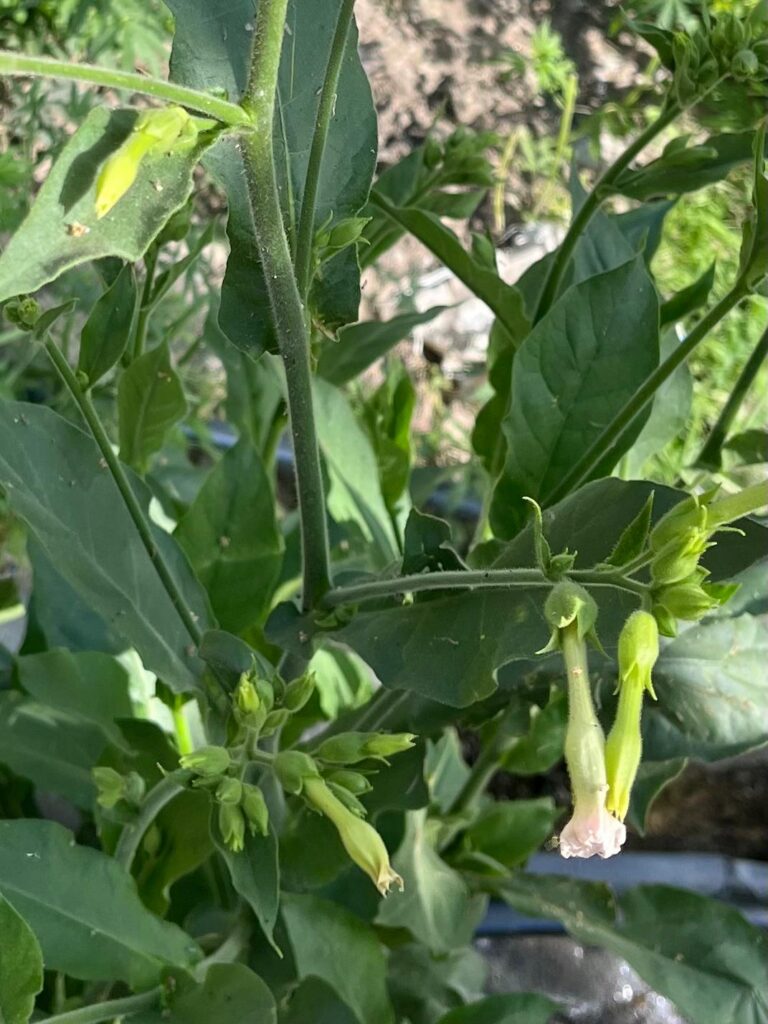Wild-Local Species for Insect-Pest Control - 2nd Edition
The Himalayan region holds a wealth of botanical resources. Among these, wild-growing and naturalized species are increasingly being re-evaluated for their potential in agroecological pest management. The use of wild plants as natural insect-pest repellents continues to be a cornerstone of traditional farming—especially in Himachal Pradesh, where decoctions and plant-based pastes have been used for generations.
With Natural Farming gaining momentum and recognition through state-led training programs and the CETARA-NF certification system, the integration of local plant resources for bioinputs is being scientifically documented.
This second report, Identification of Wild and Locally Available Plant Biomass Species for Insect-Pest Control, was carried out in Pangna, Karsog Valley under the Gram Disha Trust. Although not native to the Himalayas, wild tobacco has adapted over time and is now accessible in the region. Traditionally recognized for its high alkaloid content particularly nicotine this plant is a natural neurotoxin to many agricultural pests. Farmers in the region report using it in concentrated sprays against soft-bodied insects and fungal infections.
While often associated with commercial use, wild and cultivated tobacco species contain a rich suite of bioactive compounds that make them potent candidates for insect-pest and fungal disease management.
 Important Cautionary Note
Important Cautionary Note
This document is intended solely for research and informational purposes. The information provided here is based on field observations and literature review. It should not be used as a recommendation for direct agricultural application without thorough scientific validation.
While wild tobacco is being explored for pest control, the use of nicotine-based commercial products (like nicotine sulphate or tobacco dust) is prohibited under India’s National Programme for Organic Production (NPOP).
Do not attempt to use wild tobacco or related extracts for pest control solely based on this document. These plants contain potent bioactive compounds, and their efficacy, safety, dosage, and long-term impact must be established through controlled studies and trials.
Until such research is complete, any use in farming practices should be avoided or undertaken with expert guidance and extreme caution.
Components

1. Alkaloids
Nicotine is the dominant compound, forming 90–95% of the total alkaloid content in N. tabacum. It acts as a neurotoxin, interfering with insect nervous systems by mimicking acetylcholine, ultimately leading to paralysis and death.
N. rustica is even more potent, containing up to 18% nicotine, and is also rich in other alkaloids like nornicotine, anatabine, anabasine, myosmine, and harmala alkaloids which affect neural function and behavior in pests.
2. Terpenoids
N. tabacum flowers contain cembranoids, a class of diterpenes known to disrupt molting cycles in lepidopteran larvae, and act as feeding deterrents and antifungal agents—particularly effective against pathogens like Valsa mali, which causes apple canker.
3. Phenolics & Flavonoids
Compounds like chlorogenic acid, rutin, and tannins serve as enzyme inhibitors, impacting digestion in insects and providing broad-spectrum antimicrobial protection.
4. Saponins & Steroids
These disrupt insect cell membranes and interfere with hormone regulation, which hampers molting and larval development. Their toxicity is especially pronounced in soft-bodied pests like aphids.
5. Essential Oils (especially in N. rustica)
All of which have insecticidal, repellent, and antifungal activity making these oils effective against mosquitoes, beetles, and pathogenic fungi. Drying oils from N. tabacum seeds may coat insects and act similarly to neem oil, suffocating pests and inhibiting fungal spores.
6. Reducing Sugars & Amino Acids
Compounds like glutamic acid, asparagine, and γ-aminobutyric acid (GABA) influence insect feeding behaviour, often acting as bait, which can be leveraged in integrated pest control strategies.
Practical Efficacy
Lab and field observations have shown:
- Up to 92% mortality in Grapholita molesta larvae using N. tabacum extract at just 2 mg/ml.
- 85–90% reduction in egg-laying by fruit moths on treated branches.
- Complete herbicidal activity against Bidens pilosa (grass) using concentrated fermented extract.
- Combined tobacco-neem-betel decoctions have proven effective against banana pseudostem weevil.
Conclusion
Wild tobacco presents a complex and potent biochemical components with wide ranging pesticidal and antimicrobial effects. With careful handling and more scientific validation, these species could become an important part of the natural farming toolkit, particularly in pest-resistance cases and ecological farming models where synthetic inputs are undesirable.
More wild plants continue to be studied by Gram Disha Trust, building a database of bioresources to support truly localized, sustainable agriculture in Himalayan communities.


 Important Cautionary Note
Important Cautionary Note